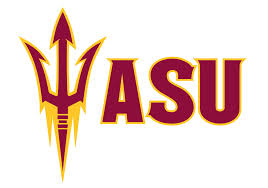Near the end of Arizona State’s 74-72 win over Oregon, star sophomore guard Jahii Carson had one of the best defensive sequences of his college career even though it may have gone unnoticed by many onlookers.
While the effort and execution was great, it was also an example of Carson being capable of so much more than he’s provided the Sun Devils this season.
Led by Joseph Young’s remarkable 29 second-half points, the Ducks stormed back from a 21-point deficit to take a late lead before ASU steeled itself in the game’s final minute and emerged victorious.
Jermaine Marshall made several key plays on the offensive end of the court and, when ASU needed him most, Carson face-guarded Young, preventing him from getting the ball on consecutive possessions and chased him through a screen tightly enough to contest a missed jump shot.
No, Carson didn’t get a flashy steal and dunk that would have made the cut on SportsCenter’s 15-second retelling of the game, as it was Jordan Bachynski’s block of Young at the rim at the buzzer which garnered a lot of the attention. But Carson enabled that moment with his play in the waning minutes.
Problem is, defensive play like that from Carson is infrequent at best. Rewind just a week and a half to ASU’s overtime road win at Cal when ASU coach Herb Sendek took Carson off Cal star guard Justin Cobbs, who leads the Bears in scoring and assists.
Instead of Carson going toe-to-toe in a match-up of two of the Pac-12’s best players, Carson was hanging out off the ball as Cobbs broke down Shaquille McKissic — a pretty good defender for a wing — off the bounce time and again down the stretch in the second half.
Why would Sendek do that? Maybe it’s because Carson’s 16 steals are half as many as McKissic’s 33 rips. That’s certainly a good indicator of a broader problem ASU faces on the defensive end of the floor this season.
Sendek has time and again lamented his team’s dearth of deflections — plays that frequently lead to easy transition offense — and though he has been careful not to mention anyone by name, there can be no doubt that Carson has underachieved in this regard and it’s holding the Sun Devils back from their true potential.
Players who get a lot of deflections — a stat not officially recorded — also get a lot of steals and create offense on the defensive side of the court. But compare Carson to the other elite point guards in the country in the category and a glaring discrepancy becomes very apparent.
Syracuse point guard Tyler Ennis has 51 steals and Oklahoma State’s Marcus Smart has 53 steals. Those are the players Carson — with 16 steals, fewer than one-third of the other two — is competing with for not only the distinction of best college point guard, but even more importantly, NBA draft consideration.
On Tuesday night’s ESPN broadcast of Ohio Sate versus Michigan, Buckeyes’ guard Aaron Craft was lauded repeatedly for his defensive efforts, which set the tone for his team. Though he is considerably less quick and nimble than Carson, a reality represented in the draft stock of the two players, Craft had 61 steals entering the game.
Broadcasters seldom if ever gush about Carson’s defensive exploits.
With one of the best defensive backcourts in the country, you can be sure Ohio State coach Thad Matta isn’t complaining about his team’s lack of deflections or steals. Indeed, the Buckeyes rank among the Top-20 major conference teams nationally in the category. ASU, meanwhile, ranks 11 of 12 in the Pac-12 and No. 266 in steals out of 345 NCAA Division I teams nationally.
Even though this is the case ASU ranks No. 49 nationally in scoring, a testament to Carson, a player who is No. 3 in the league in scoring and clearly one of its very best players. ASU scores a remarkable number of points for being a team that doesn’t tend to get a lot of breakaway opportunities off turnovers.
At 18-6 overall and 7-4 in the Pac-12, there’s no question ASU would be much worse without Carson and he’s clearly not only its best player this season, but arguably its best point guard in the history. But players should be judged against their potential, and Carson’s performance on the defense end of the floor has too often left a lot to be desired. The ramifications of this are significant.
Carson is the leader of the team, its best player. As its point guard he sets the tone on both sides of the court and, if he’s doing his job, controls the rhythm of the game. When his effort is exemplary on defense, his teammates are going to follow suit.
We know what Carson is capable of because we saw it against Young and Oregon Saturday. After Sendek alternately tried putting McKissic and Bo Barnes on Young, he went with Carson, and his star player delivered. But why did Sendek even have to try those other players on Young in the first place? Why did ASU give up a 21-point second half advantage?
When NBA executives meet with Carson in advance of this year’s draft they’re certainly going to ask him about his defensive ability, especially given the fact that he’s undersized and 5-foot-10 point guards are few and far between at the highest level of basketball for that reason. Those conversations are likely to include some uncomfortable questions pertaining to his mediocre steals and deflections production. Is his size a limitation? Quickness? Does he simply not try hard enough?
Answering those questions is going to eventually lead to some difficult introspection and be tough to answer. No matter the reason given, it’s an admission of a flaw, be it physical or with competitive desire.
The better way to answer those questions — and improve the perception of educated observers including NBA scouts — is not by being defensive after the fact. It’s by being a better defender now.
Related posts:
Chris Karpman
Publisher of ASUDevils.com, a Rivals.com site; creator of the Karp-o-meter; perpetually sardonic yet perennially optimistic.


